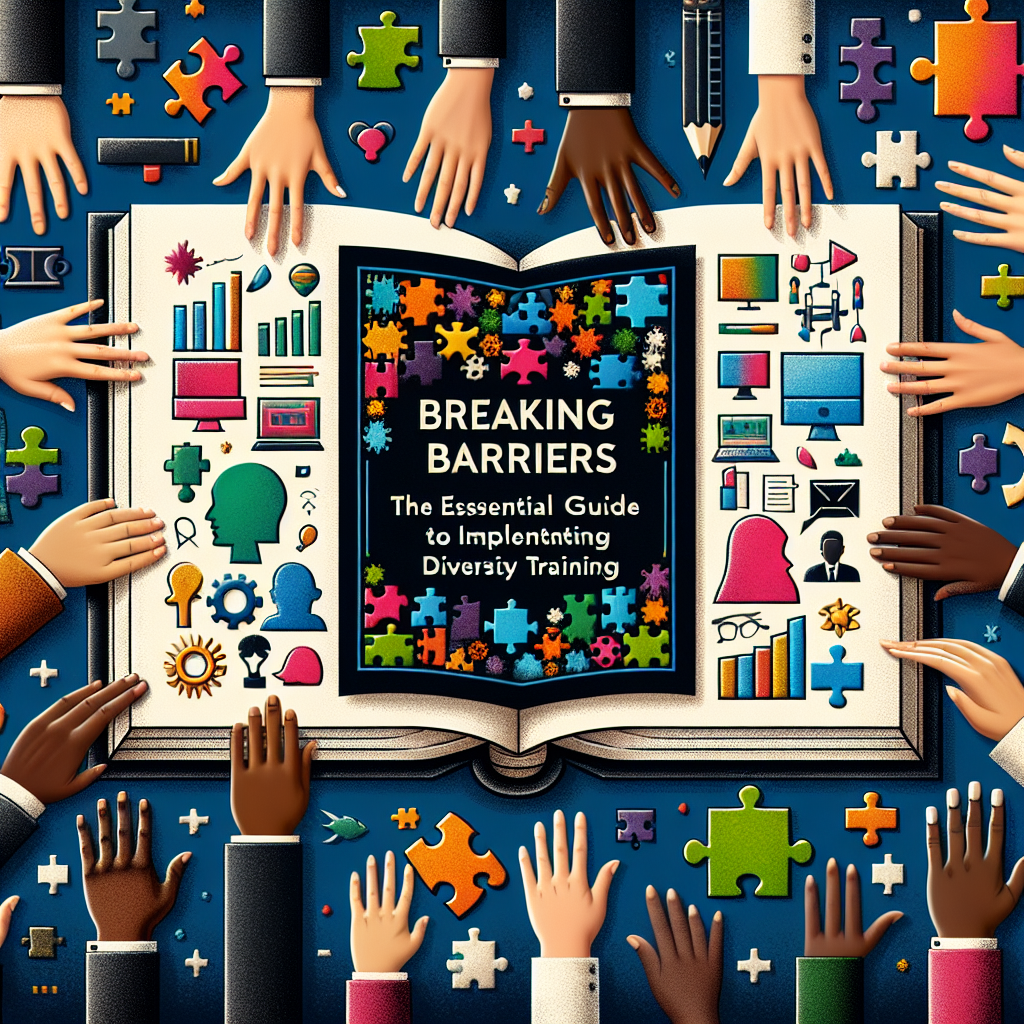Introduction
In today’s global economy, fostering diversity in the workplace goes beyond mere compliance; it has become a catalyst for innovation, a driver for engagement, and a necessity for attracting top talent. Organizations that successfully implement effective diversity training can unlock a wealth of perspectives, fostering an environment that not only acknowledges differences but celebrates them. Breaking Down Barriers: The Essential Guide to Implementing Diversity Training will navigate you through the complexities of crafting and executing a successful diversity training program.
Why Diversity Training Matters
Imagine walking into a workplace where ideas flow freely, creativity thrives, and every voice is valued. Such an atmosphere not only enhances productivity but also positions your organization as a formidable competitor. Research shows that companies embracing diversity can outperform their competitors in productivity and profitability, making effective diversity training not just a peripheral endorsement but a strategic necessity.
Understanding Diversity Training
What Is Diversity Training?
Diversity training encompasses educational programs designed to promote awareness, understanding, and skills to manage a diverse workforce. Often aimed at reducing biases—conscious and unconscious—diversity training informs employees on the value of diverse backgrounds, cultures, and perspectives in achieving organizational goals.
Types of Diversity Training
- Awareness Training: Focuses on recognizing and understanding biases.
- Skill Building: Empowers employees with tools for effective communication and collaboration.
- Inclusive Leadership Training: Guides leaders in fostering an inclusive environment.
- Cultural Competence Training: Enhances understanding of different cultural norms and practices.
Why Implement Diversity Training?
Effective diversity training leads to improved employee engagement, reduced turnover rates, and increased innovation. Moreover, it reflects your organization’s commitment to social responsibility, enhancing its brand image and appeal to customers who prioritize diversity and inclusion.
Steps to Implementing Effective Diversity Training
Step 1: Assess Organizational Needs
Understanding your organization’s specific diversity challenges is the foundation of effective training. Conduct surveys and focus groups to gauge perceptions about diversity within the workplace.
Case Study: IBM’s Diversity Engagement Strategy
IBM has long recognized the importance of diversity, often surveying its employees to identify areas for improvement. This proactive approach has enabled the company to refine its training initiatives, ensuring they address real concerns within the workforce.
Step 2: Establish Clear Objectives
Be clear about what you hope to achieve with your diversity training. Whether it’s reducing bias, improving team collaboration, or fostering innovation, defined objectives will guide the training process.
| Objective | Expected Outcome |
|---|---|
| Reduce unconscious biases | More equitable hiring practices |
| Improve communication skills | Enhanced team collaboration |
| Create inclusive culture | Increased employee engagement |
Step 3: Choose the Right Format
Consider the diverse learning styles of your workforce. Options include:
- In-person workshops
- Online courses
- Webinars
- Interactive activities
A blended approach often yields the best results, enabling employees to engage with the material in multiple forms.
Step 4: Engage Qualified Facilitators
The success of your diversity training heavily relies on the expertise of the facilitators. Look for individuals with substantial experience in diversity training who can create a safe space for dialogue.
Step 5: Promote Active Participation
Encourage employees to share their experiences and perspectives. This dialogue fosters mutual respect and understanding.
Case Study: Google’s Unconscious Bias Training
Google’s implementation of unconscious bias training is a testament to promoting active participation. Rather than a one-way lecture, Google encourages discussions that make employees reflect and share their viewpoints.
Step 6: Monitor and Evaluate
After the training, assess its impact through surveys, feedback sessions, and performance metrics. Evaluating the effectiveness of your training is crucial for continuous improvement.
Challenges in Diversity Training
Resistance to Change
Implementing diversity training can evoke resistance among employees. Address these concerns through open dialogue and clear communication about the training’s objectives.
Insufficient Leadership Support
Without buy-in from upper management, diversity initiatives may stall. Ensure leaders are visibly engaged in the training process.
Creating a Culture of Diversity
Implementing training is just one part of a broader commitment to diversity. To break down barriers, organizations should:
- Foster open dialogue about diversity.
- Create Employee Resource Groups (ERGs) to support diverse communities.
- Develop mentorship programs to promote growth among underrepresented groups.
Conclusion
In Breaking Down Barriers: The Essential Guide to Implementing Diversity Training, we’ve explored the critical components necessary for effective diversity training and the broader cultural shifts it can inspire within your organization. By fostering an inclusive environment and combating bias, organizations can unlock creativity and innovation, driving success in a rapidly changing world.
Engaging in diversity training is more than just an ethical obligation; it is a strategic advantage. The real power lies not just in training, but in the ongoing commitment to maintaining a culture that respects differences. Let this guide be your first step towards a more inclusive workplace that thrives on diversity.
FAQs
1. What are the main goals of diversity training?
Diversity training aims to raise awareness and understanding of diversity issues, reduce biases, improve teamwork, and cultivate an inclusive work environment.
2. How can I assess the effectiveness of our diversity training program?
You can evaluate effectiveness through employee surveys, performance metrics, and feedback sessions, focusing on improvements in workplace culture and engagement.
3. How often should diversity training be conducted?
While it’s beneficial to conduct training annually, it should also be part of an ongoing conversation. Regular refreshers can keep diversity top-of-mind.
4. What are some common challenges of implementing diversity training?
Challenges include employee resistance, insufficient leadership support, and the difficulty of navigating sensitive topics. Open communication can help mitigate these issues.
5. How can we ensure our diversity training is effective?
To ensure effectiveness, conduct thorough needs assessments, engage qualified facilitators, and promote active participation among employees.
By following this essential guide, you can embark on a journey towards truly breaking down barriers in your organization, fostering a culture where everyone can thrive.

